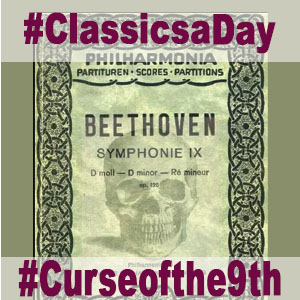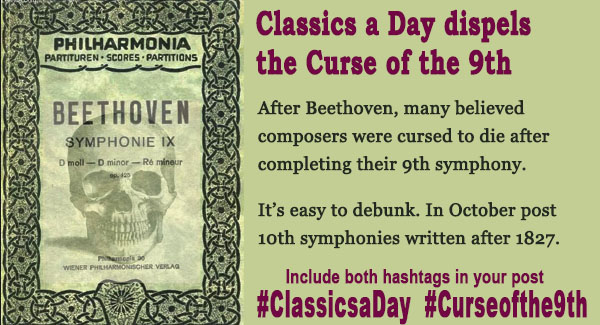
#ClassicsaDay #Curseofthe9th Week 3
By Ralph Graves
This month the Classics a Day team takes on the “Curse of the 9th.” Beethoven wrote his ninth symphony and died. Since then, the Curse of the Ninth has circulated through the classical music world. Mahler sincerely believed in it. He wrote nine numbered symphonies and died. As did Bruckner, Schubert, Dvorak, and Vaughan Williams.

But how real is the curse? The Classics a Day team challenges folks to post Symphony No. 10s by composers who followed Beethoven.
And it turns out there are quite a lot of them.
Here are my posts for the third week of #Curseofthe9th.
10/16/23 Alexander Moyzes (1906–1984): Symphony No. 10 in C, Op. 77
This Slovak composer wrote his 9th symphony in 1971. His 10th symphony was completed seven years later. He would go on to write twelve total.
10/17/23 Dmitri Shostakovich (1906-1975): Symphony No. 10 in E minor, Op. 93
After completing his 9th symphony in 1943, there was speculation in the popular press about Shostakovich surviving the curse. He did. His 10th was written in 1953, and he would write a total of 15.
10/18/23 Henk Badings (1907–1987): Symphony No. 10
This Dutch composer completed his 9th symphony in 1961 and followed it up with his 10th a year later. Badings would write a total of 15.
10/19/23 Vagn Holmboe (1909-1996): Symphony No. 10, Op. 105
This Danish composer finished his 9th Symphony in 1969. He followed it up the following year with his 10th. Holbmoe would write thirteen symphonies in all.
10/20/23 William Schuman (1910-1992): Symphony No. 10, American Muse.
Schuman completed his 9th Symphony in 1968. His tenth, from 1976. was commissioned for the Bicentennial. He dedicated it “to the country’s creative artists, past, present and future.”

